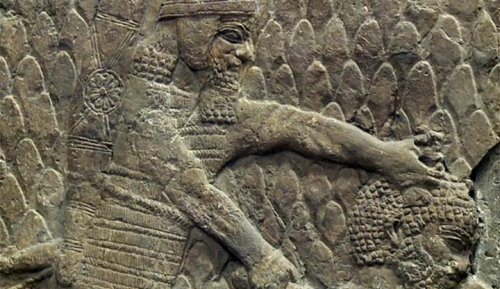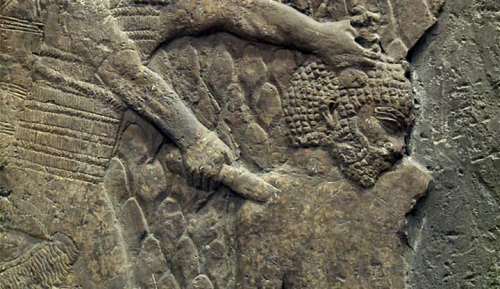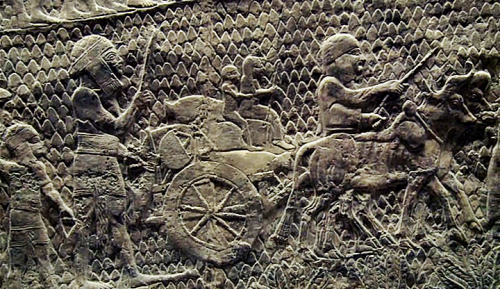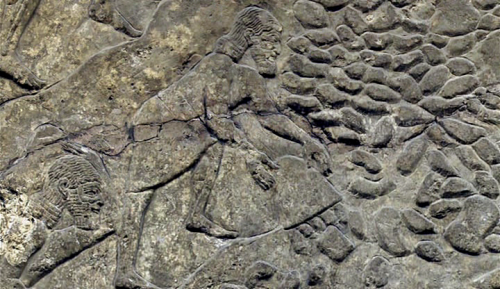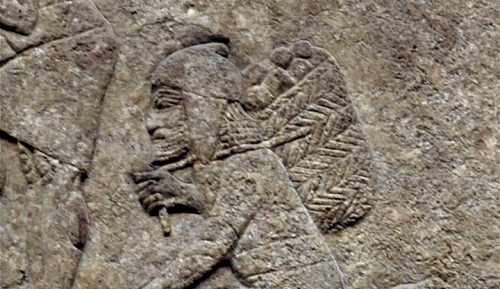#sennacherib
Ancient Worlds - BBC Two
Episode 2 “The Age of Iron”
TheLachish Relief, a series of stone panels which decorated the walls of the Assyrian king Sennacherib’s great palace at Nineveh. The reliefs narrate the story of the siege and capture of the city of Lachish,inJudah, in 701 BC.
The Lachish relief shows Sennacherib as an invincible king presiding over a perfect victory. Soldiers storm the town walls while a procession of prisoners are marched out of the town into exile, through the countryside, to be resettled elsewhere in the Assyrian Empire. Below them high officials and foreigners are being tortured and executed. The panel also depicts the looting of the city and the surviving men put to work in stone quarries (pictures n. 4, 5). Such scenes demonstrated the terrible consequences of rebelling against the Assyrian empire.
PART III
The British Museum, London, UK
Post link
Ancient Worlds - BBC Two
Episode 2 “The Age of Iron”
TheLachish Relief, a well-preserved series of stone panels which decorated the walls of the Assyrian king Sennacherib’s great palace at Nineveh. The reliefs narrate the story of the siege and capture of the ancient city of Lachish, inJudah, in 701 BC.
King Sennacherib reigned from 704 to 681 BC. He moved the empire’s capital to the ancient city of Nineveh and built the Great Palace of Nineveh, also known as the South-West Palace. Many rooms were decorated with alabaster wall reliefs.
The Lachish relief hold depictions of Assyrian siege ramps, battering rams, sappers, and other siege machines and army units, along with Lachish’s architecture and its final surrender. The reliefs also show scenes of extreme violence: the defenders of the city being thrown over the ramparts, impaled, having their throats cut and asking for mercy. Warfare is a recurring theme in Assyrian art and texts.
The single inscription on the reliefs reads:
“Sennacherib, the mighty king, king of the country of Assyria, sitting on the throne of judgment, before (or at the entrance of) the city of Lachish (Lakhisha). I give permission for its slaughter”
PART II
The British Museum, London, UK
Post link
Ancient Worlds - BBC Two
Episode 2 “The Age of Iron”
Lachishwas the second most important city in the southern kingdom of Judah,part of the Kingdom of Israel.
Occupation at the site of Lachish began during the Neolithic period and during the 10th and 9th centuries BC it was settled by the Israelites. It was heavily fortified, surrounded by two walls and ramparts and a royal palace was built on a platform in the center of the city.
In 701 BC, during the revolt of king HezekiahagainstAssyria, Lachish was besieged and captured by the Assyrian king Sennacherib. The Assyrian forces, in his invasion of the city, constructed the only siege ramp excavated in the ancient Near East. More than 1000 iron arrowheads were found in the ramp as well as a chain for catching the battering rams. Excavations also revealed approximately 1500 skeletons of men, women and children in one of the caves near the site, indicating the ferocity of the battle. The survivors were mass deported to Assyria, where they were forced to work as slaves.
The city was rebuilt in the late 7th century BC during the decline of the Neo-Assyrian Empire, but it fell to the greatest king of the Neo-Babylonian Dynasty, Nebuchadnezzar II in his campaign against Judah in 586 BC. After the fall of the Achaemenid Empire at the hands of Alexander the Great the site was abandoned and it has been unoccupied since then.
The events surrounding the conquest of Lachish by the Assyrians are recorded in the Lachish reliefs. The reliefs were part of the decoration of the South-West Palace of Sennacherib in Nineveh.
PART I
Tel Lachish, Israel
Post link

